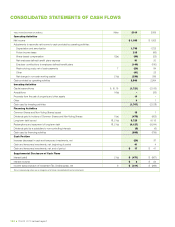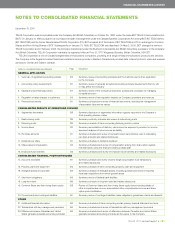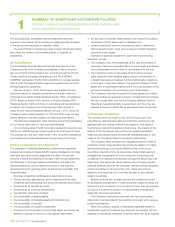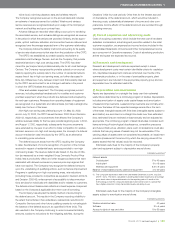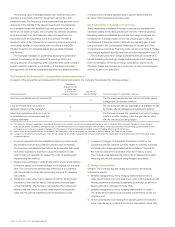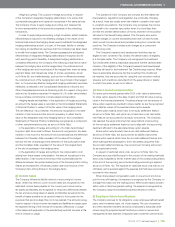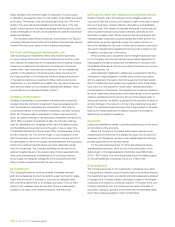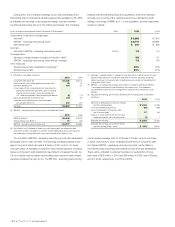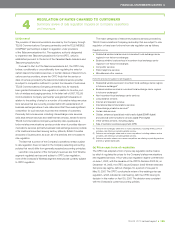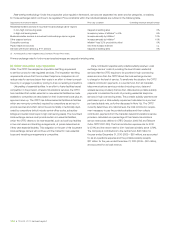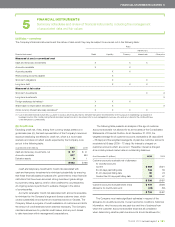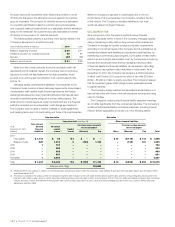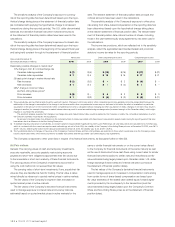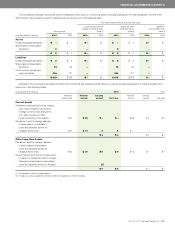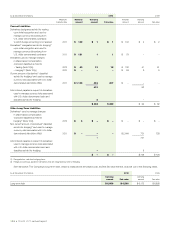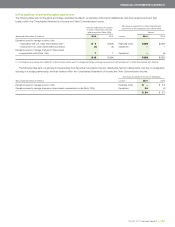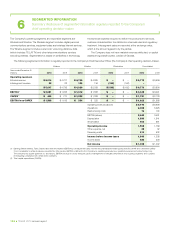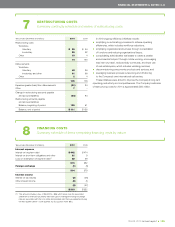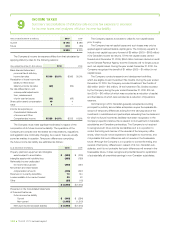Telus 2010 Annual Report Download - page 134
Download and view the complete annual report
Please find page 134 of the 2010 Telus annual report below. You can navigate through the pages in the report by either clicking on the pages listed below, or by using the keyword search tool below to find specific information within the annual report.
130 . TELUS 2010 annual report
Rate-setting methodology: Under the prospective price regulation framework, services are separated into seven service categories, or baskets,
for those exchanges which continue to be regulated. Price constraints within the individual baskets are outlined in the following table.
Capped and non-forborne basket Price cap constraint Overriding maximum annual increase
Residential wireline services in incumbent local exchange carrier regions
In non-high cost serving areas Capped at existing rates 0%
In high cost serving areas Increase by lesser of inflation(1) or 5% 5%
Business wireline services in incumbent local exchange carrier regions Increase annually by inflation(1) 10%
Other capped services Increase annually by inflation(1) 10%
Competitor services Inflation(1) less 3.2% productivity offset 0%
Public telephone services One-time increase to $0.50 n.a.
Services with frozen rates (e.g. 9-1-1 service) Capped at existing rates 0%
(1) As measured by chain-weighted Gross Domestic Product Price Index.
Primary exchange rates for forborne services/exchanges are capped at existing rates.
Voice contribution expense and portable subsidy revenue: Local
exchange carriers’ costs of providing the level of basic residential
services that the CRTC requires to be provided in high cost serving
areas are more than the CRTC allows the local exchange carriers
to charge for the level of service. To ameliorate the situation, the CRTC
collects contribution payments, in a central fund, from all Canadian
telecommunications service providers (including voice, data and
wireless service providers) that are then disbursed as portable subsidy
payments to subsidize the costs of providing residential telephone
services in high cost serving areas. The portable subsidy payments are
paid based upon a total subsidy requirement calculated on a per line/
per band subsidy rate, as further discussed in Note 1(c). The CRTC
currently determines, at a national level, the total contribution require-
ment necessary to pay the portable subsidies and then collects
contribution payments from the Canadian telecommunications service
providers, calculated as a percentage of their telecommunications
service revenue (as defined in CRTC Decision 2000-745 and Telecom
Order CRTC 2001-220). The final contribution expense rate for 2010
is 0.73% and the interim rate for 2011 has been similarly set at 0.73%.
The Company’s contributions to the central fund, $46 million for
the year ended December 31, 2010 (2009 – $50 million), are accounted
for as an operations expense and the portable subsidy receipts,
$37 million for the year ended December 31, 2010 (2009 – $51 million),
are accounted for as local revenue.
(c) Other non-price cap regulation
Other: The CRTC has adopted an imputation test filing requirement
to set floor prices for rate regulated services. The imputation test filing
requirements ensure that the incumbent telephone companies do not
reduce rates for services below their costs in an effort to thwart competi-
tive entry or engage in predatory pricing to drive out existing competitors.
Unbundling of essential facilities: In an effort to foster facilities-based
competition in the provision of telecommunications services, the CRTC
has mandated that certain essential or near-essential facilities be made
available to competitors at rates based on their incremental costs plus an
approved mark-up. The CRTC has defined essential facilities as facilities
which are monopoly controlled, required by competitors as an input to
provide services and which cannot be economically or technically dupli-
cated by competitors (which include central office codes, subscriber
listings and certain local loops in high cost serving areas). The incumbent
local exchange carriers must provide certain non-essential facilities,
which the CRTC deems to be near-essential, such as local loop facilities
in low cost areas and transiting arrangements, at prices determined as
if they were essential facilities. This obligation on the part of the incumbent
local exchange carriers will continue until the market for near-essential
loops and transiting arrangements is competitive.


